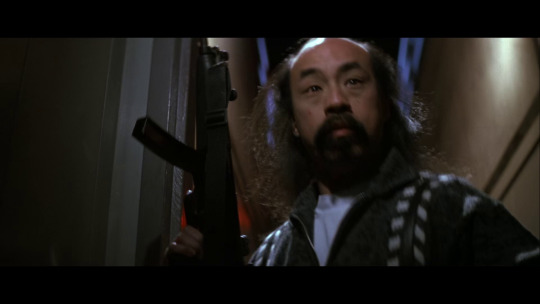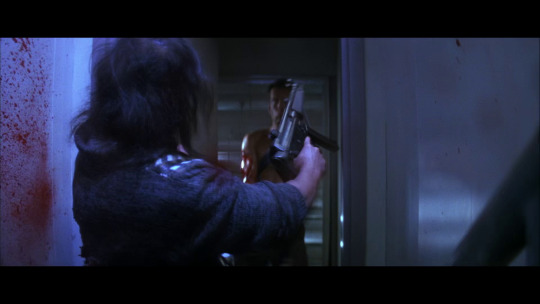#al leong
Photo
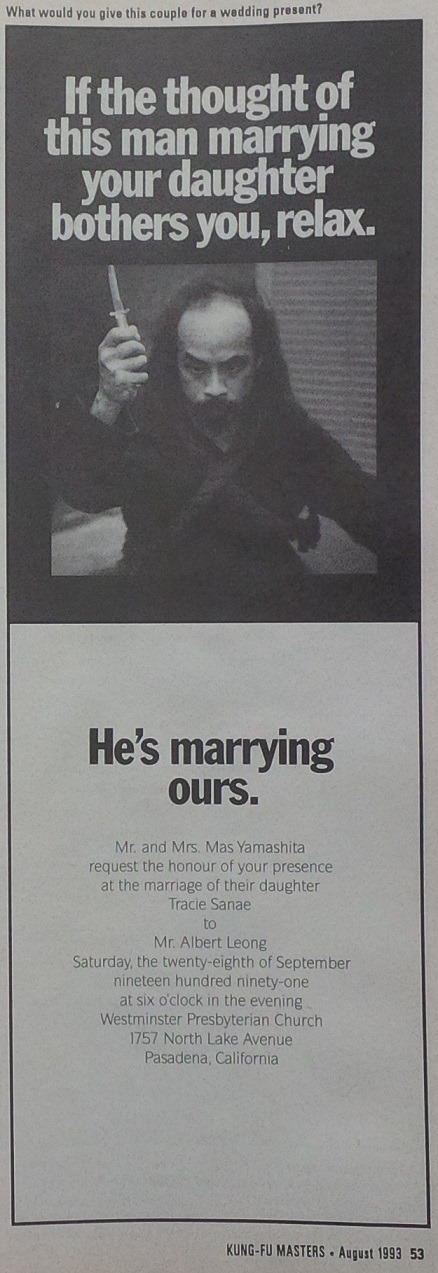
The absolutely amazing announcement of perennial Asian henchman Al Leong’s wedding in an issue of Kung-Fu Masters.
4K notes
·
View notes
Text

Al Leong, Bill & Ted's Excellent Adventure (1989)
128 notes
·
View notes
Text

Al Leong's family wedding message, 1991.
1K notes
·
View notes
Text





|| W A T C H I N G ||
#ACTION JACKSON (1988)#CARL WEATHERS#CRAIG T NELSON#VANITY (singer)#Denise Matthews#SHARON STONE#THOMAS F WILSON#BILL DUKE#Robert Davi#Jack Thibeau#Armelia McQueen#Ed O'Ross#Al Leong#James Lew#Sonny Landham#watching#ACTION MOVIE#80S MOVIES
30 notes
·
View notes
Photo

#bill & ted's excellent adventure#keanu reeves#alex winter#robert v. barron#terry camilleri#clifford david#al leong#rod loomis#dan shor#tony steedman#jane wiedlin#bernie casey#george carlin#kimberley kates#stephen herek#1989
38 notes
·
View notes
Text
IN SEARCH OF THE LAST ACTION HEROES:
80’s action films
And Those who made them happen
And how it has changed
youtube
#in search of the last action heroes#random richards#poem#haiku#poetry#haiku poem#poets on tumblr#haiku poetry#haiku form#poetic#documentary#Oliver Harper#scott adkins#shane black#ronny cox#steven e. de souza#bill duke#jenette goldstein#al leong#Ian Nathan#zak penn#eric roberts#paul verhoeven#michael jai white#alex winter#graham yost#vernon wells#action film#cynthia rothrock#Philip Rhee
0 notes
Link

0 notes
Text
The Twilight Zone: The Movie (1983)
The Twilight Zone: The Movie by #JohnLandis, #StevenSpielberg, #JoeDante, #GeorgeMiller, "only Miller’s is strong enough to stand on its own", Now reviewed on MyOldAddiction.com
JOE DANTE, JOHN LANDIS, GEORGE MILLER, STEVEN SPIELBERG
Bil’s rating (out of 5): BBB.5
USA, 1983. Warner Bros.. Story by George Clayton Johnson, Screenplay by John Landis, George Clayton Johnson, Richard Matheson, Melissa Mathison, Based on stories by Jerome Bixby, Richard Matheson, Inspired by the series created by Rod Serling. Cinematography by Allen Daviau, John Hora, Stevan Larner. Produced…
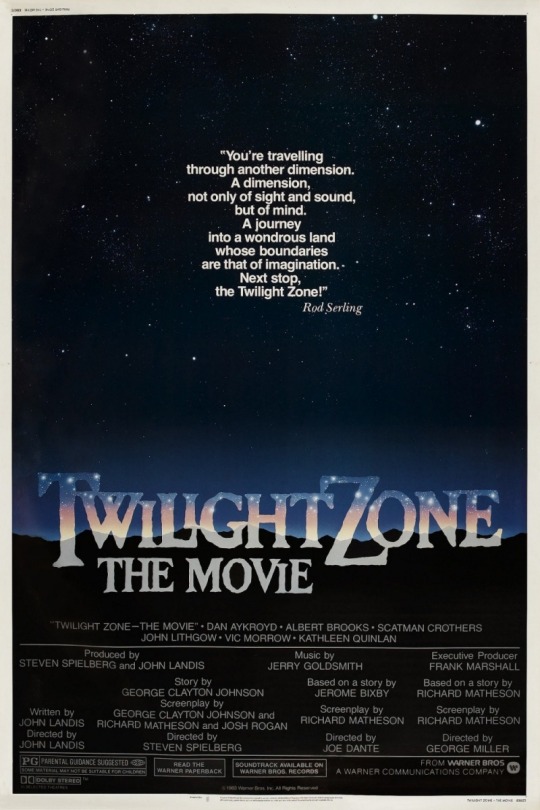
View On WordPress
#Abbe Lane#Al Leong#Alan Haufrect#Albert Brooks#Allen Daviau#Annette Claudier#Bill Mumy#Bill Quinn#Bill Taylor#Byron McFarland#Carol Serling#Charles Hallahan#Charles Knapp#Cherie Currie#Cheryl Socher#Christina Nigra#Christopher Eisenmann#Dan Aykroyd#Debby Porter#Deborah Lynn Scott#Deborah Nadoolman#Dick Miller#Domingo Ambriz#Donna Dixon#Doug McGrath#Eddy Donno#Eduard Franz#Elsa Raven#Evan Richards#Frank Toth
0 notes
Text
The agenda is still strong

#vamos únanse al lado oscuro#netflix shadow and bone#alina starkov#tamar kir bataar#Tamar x alina#Grishaverse#Jessie Mei li#anna leong brophy
57 notes
·
View notes
Text

#Kurt Russell and ultimate 80s henchman Al Leong on the set of Big Trouble in Little China (1986)#Universe_Zen#oldschool
28 notes
·
View notes
Text
It's funny watching a Badass Operator-themed action movie from like 2010-2015 because you'll be like "I wonder if Tait Fletcher is in th- oh, there he is"
0 notes
Text
Malaysians engagement with politics on social media, yay or nah?
In the era of digitalization, the impact of social media on democracy and political engagement is unquestionable. The use of social media platforms is a significant advancement in communication technology that has the potential to improve various aspects of human behavior (Lee et al., cited in Abdullah et al. 2021). Citizens of a diverse nation actively engage in political conversation, share ideas, and build the narrative of the country's democratic path on digital platforms, which resonate with the beating heartbeat of the nation. According to Leong 2015, The Internet is widely acknowledged for its capacity to significantly augment democratic processes and practices by enabling easy access to extensive information. So, what are the impact that the dynamic interaction between social media and Malaysia's political scene on democracy?
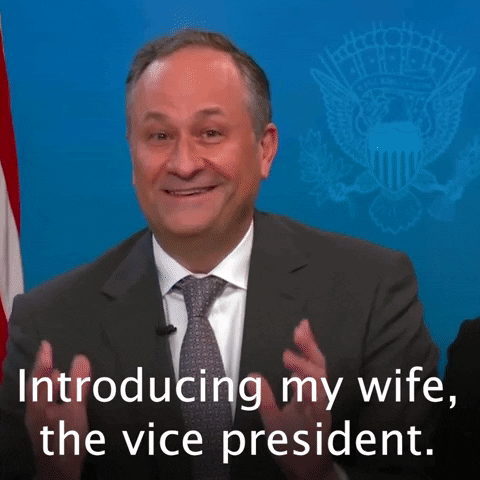
Within the domain of Malaysian politics, social media serves as a dynamic space where many platforms influence and create political discussions. While the government still maintains strict control over opposing media, political activists now have a new platform to spread their message thanks to the Internet without having to worry as much about laws (Wok & Mohamed 2017). Individuals have the ability to establish separate political groups on the internet, publish and spread political matters via blogs, and share political videos on their social media platforms. According to Weiss (2012), the political effects of these types of media are shaped by the dynamic and interactive nature of these forms. Additionally, social media platforms like Facebook, Twitter, and instant messaging applications such as WhatsApp serve a vital role in providing information and enabling political engagement. According to Abdullah et al. (2021), it is discussed that the reasons and processes behind the use of online platforms for political information-seeking, which serve as a substitution for traditional offline methods of communication, such as talking with friends, asking questions, sharing beliefs or information, and engaging in practices related to political matters.

Political entities in Malaysia effectively utilize social media to reinvent normal campaigning and communication within the fast-changing digital world. An example would be in the 2008 general election, political group Barisan National had its leaders prioritized the creation of their online presence by utilizing websites, blogs, and social media platforms such as Twitter and Facebook to engage with young voters (Mohsin & Raha, cited in Leong 2015). Additionally, they established online e-government portals to facilitate public participation, feedback, and the delivery of services. Along with social media, it helps enable the spread of political messages and offers a direct means of communication, which surpasses traditional campaign techniques by providing immediacy. Social media plays a crucial role for politicians in shaping their public image and providing transparency to users by sharing information to the public, and the online presence of political leaders will demonstrate their interactions with voters, which is a crucial aspect in attracting voters (Hamid et al. 2018). The rise of social media has given politicians a powerful tool to effectively connect with and involve younger voters. Nevertheless, this ease of access also has dangers, since the platform's unrestricted nature exposes politicians to the possibility of intentional sabotage.
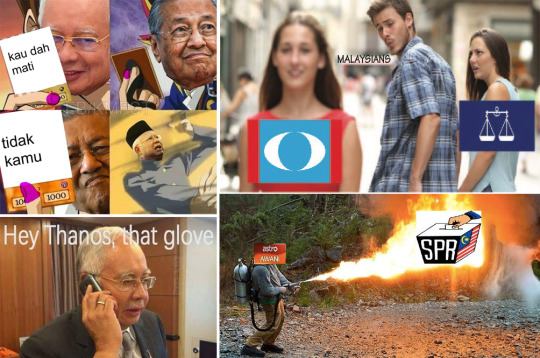
Although social media has a significant impact on making information accessible to everyone, it also presents a series of difficulties, most notably demonstrated by the quick spread of false or misleading information. In a rarer occurrence, a study found out that political parties were using cyber- warfare tactics during the general election in 2013, to discredit and derail their messages, reducing the impact and influence each party has in the election (Mill, cited in Leong 2015). Thus, imploding and increase of cyber troopers and social media users whose purpose was to counter any opposition media content. According to Leong (2015), the internet was filled with manipulation, overstatement, and misinterpretation of information for political purposes, thus infecting the competence and rationality of citizens. Thus far, the government has been actively trying to minimize the spread of false political content, or any information that could negatively impact the nation's reputation. According to Weiss (2012), a blogger was charged and had possible penalization when they were caught publishing false information on their blog.
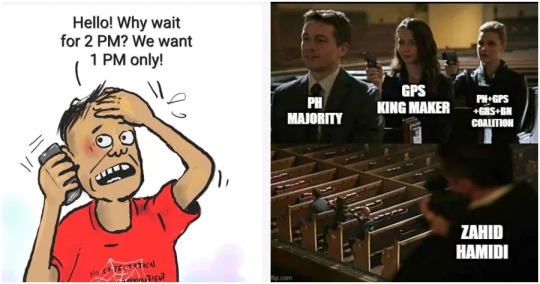
In conclusion, the mutual beneficial relationship between Malaysians and social media has brought forth a major and significant shift in the political landscape of the nation. The connection between technology and politics, particularly shown by the active participation of citizens, has fundamentally changed the old models of political communication. It is argued that politicians and parties are transitioning from the conventional one-sided, hierarchical method of communication to a more interactive approach of communication (Leong 2015). In the era of digitalization, where knowledge is easily accessible, it is crucial for everyone, especially the younger people, to participate actively in political discussions. Participation in these discussions provides citizens with the information to affect the political landscapes that will impact the future direction of the nation.

References:
Abdullah, N.H., Hassan, I., Fazil Ahmad, M., Hassan, N.A. and Ismail, M.M 2021, ‘Social media, youths and political participation in Malaysia: A review of literature' International Journal of Academic Research in Business and Social Sciences, Forthcoming, viewed 15 November 2023, < http://dx.doi.org/10.2139/ssrn.3849948>.
Leong, P. P. Y 2015,’Political Communication in Malaysia: A study on the Use of New Media in Politics’, JeDEM - eJournal of eDemocracy and Open Government, 7(1), pp, 46–71, viewed 15 November 2023, < http://dx.doi.org/10.29379/jedem.v7i1.372>.
Wok, S. and Mohamed, S 2017,’Internet and social media in Malaysia: Development, challenges and potentials’ In The evolution of media communication, IntechOpen, viewed 15 November 2023, <http://dx.doi.org/10.5772/intechopen.68848>.
Weiss, M.L 2012, ‘Politics in cyberspace: New media in Malaysia. Berlin: Friedrich-Ebert-Stiftung', fesmedia Asia,viewed 15 November 2023, <https://library.fes.de/pdf-files/iez/09068.pdf>.
Hamid, Nur Nadhirah Ab, and Safawi Abdul Rahman 2018, ‘Impact of social media on Malaysia’s election landscape’, International Journal of Academic Research in Business and Social Sciences, vol. 8, no. 9 : 275-284, viewed 15 November 2023, <http://dx.doi.org/10.6007/IJARBSS/v8-i9/4590>.
2 notes
·
View notes
Text
September 18, 2023
Enriching and Assessing Young Children’s Multimodal Storytelling
Christy Wessel-Powell, Tolga Kargin, & Karen E. Wohlwend (2016)
Big Takeaway: Because children approach so much of the world around them from an attitude of play, incorporating multimodality and imaginative elements into literacy instruction helps expand the engagement of young learners, strengthen their depth of knowledge and understanding, and provide an assessment tailored to students’ individual strengths.
Nugget: One thing that stuck out to me from Wessel-Powell et al.’s article is all the ways in which the teachers in the study incorporated imaginative elements into their literacy instruction. As a student, I had experienced small insertions of multimodality in literacy instruction, but not to the point where the students and teachers were “all in,” or fully invested. Anything I had ever done similar to this, the teacher never seemed as excited, and thus students didn’t have much excitement, either. It was fascinating to read about and envision the transformation from writer’s workshop to literacy playhouse and how I might be able to incorporate something similar into my future teaching.
Why Children Need Play
Leong & Bodrova (2018)
Big Takeaway: Play is a cornerstone of learning and holds place in the classroom because it is a developmental opportunity for children to interact with peers creatively and intentionally while growing both socially and cognitively.
Nugget: One thing that stood out to me in particular from this article was the idea of “unproductive” play and how play at home does not always have the same benefits as play at school. I had never heard the term unproductive play before, but it makes sense in that some play ends up as arguing or becomes redundant and is not as beneficial to children as genuine, thoughtful play.
Building Language and Literacy Through Play
Scholastic (2018)
Big Takeaway: Play in the classroom provides learners with the opportunity to develop their language and literacy skills in a natural, imaginative environment, and teachers can foster play in the classroom by providing props and opportunities for students to engage in play.
Nugget: Something that stood out to me in this article was the importance of teachers providing students with the opportunity for dramatic play and equipping them with the tools they need to play well. I had never thought about providing adequate play materials, or props, before, but this article revealed how props are supportive of high level play.
Readerly Exploration:
I chose to do my Readerly Exploration on the Wessel-Powell et al. article. For this readerly exploration, I FaceTimed my younger sister, Nicole, to get her perspective and insight on the idea of multimodality in literacy instruction and assessment. Although most high school seniors would likely not have extensively meaningful consideration of this topic, Nicole is currently interning at our former elementary school in a fourth grade classroom and aspires to be a reading specialist or literacy instructional coach. She and I are very different learners as well, which is important to note regarding both of our experiences with multimodality in literacy. First, I shared the article with Nicole, and she skimmed through it. I then pointed her to the first and last page to read more deeply, and then I asked what she thought of the article and if she had experienced this kind of instruction as a student, and since she has, I also asked for her perspective as a learner. The first thing she said to me after reading this article was, “This makes so much sense- why doesn’t everyone teach this way?” The concept of multimodality and allowing students to tap into their imagination and natural inclination towards play made so much sense to her. Although not to the same extent as the study, Nicole had a similar learning experience in 5th grade that she remembers quite vividly. Students were tasked with creating a project instead of taking a test- their options included a movie, a commercial, a play, and various others that tapped into different modalities and required creative thinking. She loved this experience, especially since at the time she struggled significantly with test anxiety. When she reminded me of this, my understanding broadened relating to the assessment component of this. Conventional assessments are often stressful for students, something I did not think about the first time I read the article. Changing the mode of assessment not only enhances creativity and allows students to tap into their “play” mindset and strengths, but it also eliminates some of the pressure and stress from traditional testing. My understanding of the importance of multimodality in literacy instruction goes beyond how it allows students to play into their imaginative strengths, but it can also ease assessment anxiety and allow students to demonstrate their knowledge in a way that is engaging for them.
Multimedia Component:

While FaceTiming, Nicole and I also talked about our overarching elementary school literacy assessment experiences- it was very interesting to compare the vastly different experiences we had. She had much more experiences of multimodal storytelling than I did, and she really enjoyed it, while I did not enjoy my few experiences as much.
2 notes
·
View notes
Text
WHAT CHARACTERS ARE YOU ?
so i wanted to do this personality test thing &* list characters i got that the test says i match up with % wise, but from fandoms i actually know / write from , especially since i don't know a lot of fandoms. they give you 2000 characters , but i went with people i matched up to 50% with &* pulled 85 of them.
now i'm gonna go through &* mark em.
bold means i write them already , italics mean i'd consider it , bold & italic together mean i used to write them , underline means it shocked me.
Kurt Hummel ( glee ) / 83%
Agent Pleakley ( lilo & stitch ) / 78%
Effie Trinket ( the hunger games ) / 77%
Tina Cohen-Chang ( glee ) / 77%
Mia Dolan ( la la land ) / 77%
Ryan Evans ( high school musical ) / 76%
Violet Parr ( the incredibles ) / 76%
Padme Amidala ( star wars ) / 75%
Rosalind Walker ( sabrina ) / 74%
Astrid Leong-Teo ( crazy rich asians ) / 73%
Alice Cullen ( twilight ) / 73%
Blaine Anderson ( glee ) / 73%
Allison Hargreeves ( the umbrella academy ) / 73%
Belle French ( once upon a time ) / 73%
Hazel Grace-Lancaster ( the fault in our stars ) / 73%
Gabriella Montez ( high school musical ) / 73%
Monica Geller ( friends ) / 72%
Esme Cullen ( twilight ) / 72%
Rachel Berry ( glee ) / 72%
Mercedes Jones ( glee ) / 72%
Elsa ( frozen ) / 72%
Mary Margaret Blanchard / Snow White ( once upon a time ) / 72%
Jasmine ( aladdin ) / 72%
Katara ( avatar ) / 71%
Princess Leia ( star wars ) / 71%
Emma Pillsbury ( glee ) / 71%
Allison Hamilton ( the notebook ) / 71%
Hermione Granger ( harry potter ) / 70%
Tahani Al-Jamil ( the good place ) / 70%
Janet ( the good place ) / 70%
Paula Proctor ( crazy ex girlfriend ) / 70%
Princess Fiona ( shrek ) / 70%
Damian Leigh ( mean girls ) / 68%
Artie Abrams ( glee ) / 68%
Anna ( frozen ) / 68%
Claire ( fleabag ) / 68%
Peggy Carter ( marvel ) / 67%
Dr. Strange ( marvel ) / 67%
Rachel Chu ( crazy rich asians ) / 67%
Nani Pelekai ( lilo & stitch ) / 66%
Henry Mills ( once upon a time ) / 66%
Belle ( beauty & the beast ) / 66%
'Needy' Lesnicki ( jennifer's body ) / 66%
Vision ( marvel ) / 66%
Emily Fields ( pretty little liars ) / 66%
Carlisle Cullen ( twilight ) / 65%
Rosalie Hale ( twilight ) / 65%
Jasper Hale ( twilight ) / 65%
Mike Chang ( glee ) / 65%
Daryl Whitefeather ( crazy ex girlfriend ) / 65%
Spencer Hastings ( pretty little liars ) / 65%
Valencia Perez ( crazy ex girlfriend ) 64%
Rapunzel ( tangled ) / 64%
Captain Marvel ( marvel ) / 63%
Edward Cullen ( twilight ) / 63%
Eleanor Sung-Young ( crazy rich asians ) / 63%
Sabrina Spellman ( chilling adventures of sabrina ) / 63%
Ben Hargreeves ( the umbrella academy ) / 63%
Ross Geller ( friends ) / 62%
Hilda Spellman ( chilling adventures of sabrina ) / 62%
Charlie Kelmeckis ( perks of being a wallflower ) / 62%
Sharpay Evans ( high school musical ) / 61%
Ambrose Spellman ( chilling adventures of sabrina ) / 60%
Love Quinn ( you ) / 60%
Guinevere Beck ( you ) / 60%
Peeta Mellark ( the hunger games ) / 59%
Rebecca Bunch ( crazy ex girlfriend ) / 59%
Regina Mills ( once upon a time ) / 59%
Tony Stark ( marvel ) / 58%
Gretchen Weiners ( mean girls ) / 58%
Viktor Hargreeves ( the umbrella academy ) / 57%
Will Schuester ( glee ) / 56%
Emma Swan ( once upon a time ) / 56%
Maurice ( beauty & the beast ) / 56%
Steve Rogers / Captain America ( marvel ) / 55%
Brittany Pierce ( glee ) / 53%
Chip Dove ( jennifer's body ) / 52%
Regina George ( mean girls ) / 51%
Augustus ' Gus ' Waters ( the fault in our stars ) / 51%
Chandler Bing ( friends ) / 50%
Coriolanus Snow ( the hunger games ) / 50%
Janis Ian ( mean girls ) / 50%
Santana Lopez ( glee ) / 50%
Klaus Hargreeves ( the umbrella academy ) / 50%
Summer Finn ( 500 days of summer ) / 50%
1 note
·
View note
Text
game of thrones cast and characters + quenya names
Aemor Alandi Alantë Alaur Alcolië Alemno Aling Allenda Alquer Amanes Amani Amantë Amarn Ambal Anareft Andick Andose Andómë Araquan Arelmon Arerva Artilië Astir Astondi Atared Atarn Atyald Atyed Balim Baren Bellan Beritan Biancë Björn Boongs Brago Brelped Brong Bryar Bryons Caren Caris Casta Chady Chirds Chuky Clessë Clitia Coldans Correi Crahl Creen Creson Crown Danári Danáric Daranru Darómë Davan Depvand Dessë Dests Diccarë Dogam Dohnnus Donds Dords Dosts Duinórë Duiry Eagen Eassë Echor Eldandú Eldinta Eldowil Eleen Elemon Elessed Elfhe Elron Elrow Elyar Ememo Emesuss Emurn Entarë Envari Enviely Ereler Eruced Erules Erunga Eruse Evian Evincë Exantë Eyrië Eäred Eären Eäres Facard Faird Faire Faisard Faitt Falimo Fallov Fatan Fistië Fithu Fitirë Floduru Foaker Folan Foldil Foldo Folisto Forcam Formane Fornica Foron Fouted Fraca Freep Gabian Gattler Ghitya Gille Gindë Gloren Grassë Guenwer Haiser Hanórië Harmo Hassa Haught Hawom Heccur Herne Herrian Hiddan Hingin Hingwë Hinwë Hizanda Hizar Holes Holie Hostar Hought Hrerong Hrikow Hrívë Hrívëa Hróla Hröany Hughts Hyanótë Hyards Hyarin Iandóna Illiny Ilques Inaros Incedil Inyar Inórion Irienna Irmen Irreama Issons Isten Iwario Izemma Jaifer Jamair Jamitë Jaqener Joffri Johel Johity Jords Kaege Kamer Karen Karia Karida Keenel Keight Kinga Kinil Knore Krion Laimen Lalco Lamer Landë Laneht Larin Lashiel Lassë Leari Leata Lemel Lennu Leong Liancil Liarno Linnónë Loake Lobley Loccil Lorin Losking Loven Lovent Lovern Lucáno Luine Luitt Lukur Láman Lúnië Maditi Maiarme Maindór Mairi Malacil Malisto Mando Mandron Manestë Mantë Marders Maried Marley Massë Matissë McGrelk McIng McKeve Meldo Meltobb Mendor Milótë Minar Minel Minvar Minwa Minónë Mirei Mirróna Mismé Morean Morga Morildë Morman Moron Mortar Moton Msang Munce Myrinwë Míron Nafiner Nahan Naicong Nairind Naitë Namake Narryn Nersaan Nessë Neweng Ninwë Nnollad Nobor Noiden Noldar Nomern Nordel Normere Nornë Nottert Náris Návalië Nísina Nólal Nórich O'Hem Ofter Olwak Ondor Ondëa Onelórë Onnië Onórë Onótil Ormais Ormen Orolya Oroome Palloz Pattria Perindo Petward Piend Pitarró Plari Poomen Pornel Power Powers Pracen Queed Rallaur Ralmë Raman Ramba Rasta Rayner Razer Reaugh Repko Rethers Ricko Rompsi Rosma Rosse Rostedi Rostel Rostes Rómena Rómir Rúata Salall Salto Sanick Secon Secup Sefulë Selson Sephi Sielder Sight Silië Silvë Silyvar Skredge Slamani Snothan Sonsil Sophil Sougemo Sougeri Soundë Soungo Spanwë Spion Spionya Stalm Stard Steleed Stersi Stert Stevar Stobett Subley Sworyar Súlíus Tambë Tarahad Tarto Tarumba Tarvan Tater Taudge Teemo Telexar Telma Telórë Terisa Thaper Thers Thoot Thría Tighta Tildórë Toldórë Toment Topper Tords Treigha Tulives Tumar Tumor Turëa Tárim Túnanwë Túrëa Umbarro Umbars Ungolle Urulig Valarta Valda Valko Vallis Valminë Vantor Varing Vauritë Vildor Vindild Vinna Visaar Vismo Vlast Vorsted Vëars Wariam Weamant Wellónë Werie Wilia Wilwë Wlantan Worria Wunata Wylacto Wylan Wylar Wymarn Yohene Yulexar Yénon Írimo Íriárë Ñolover Ñoste Ósaronn Ṃbard
2 notes
·
View notes



